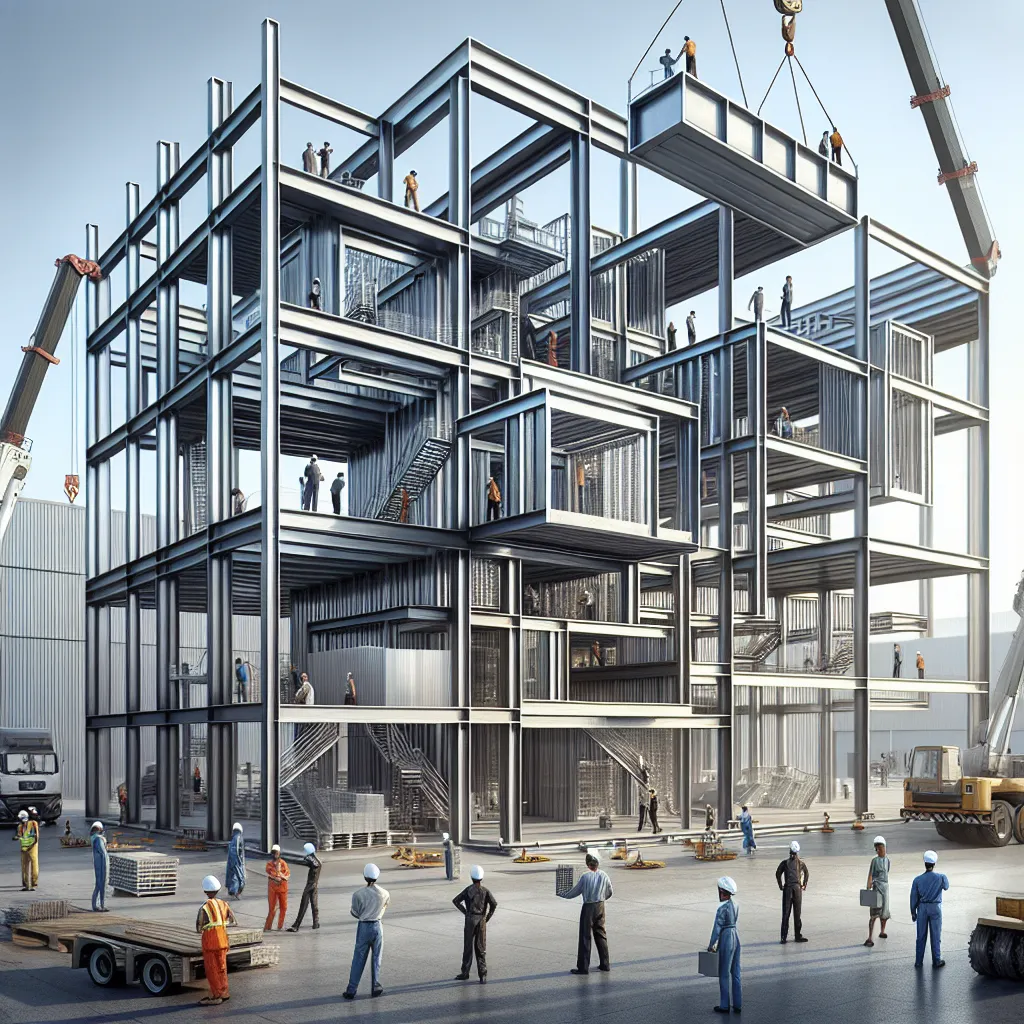Prefabricated Steel Structures: The New Era of Construction
Prefabricated Steel Structures: The New Era of Construction
Introduction
The construction industry has been witnessing a significant shift in recent years with the increasing popularity of prefabricated steel structures. These innovative building systems have revolutionized the way we construct buildings, offering numerous advantages over traditional construction methods. From residential buildings to commercial complexes, prefabricated steel structures have gained immense recognition and are becoming the go-to choice for architects, engineers, and contractors around the world.
What are Prefabricated Steel Structures?
Prefabricated steel structures, also known as modular steel buildings or simply prefab buildings, are structures that are manufactured off-site in a factory-controlled environment. The components of these structures, such as columns, beams, trusses, and panels, are fabricated using steel and then transported to the construction site for assembly. The steel components are designed and engineered to fit together seamlessly, allowing for quick and efficient installation.

Advantages of Prefabricated Steel Structures
1.
Speedy Construction:
One of the primary advantages of prefabricated steel structures is the speed of construction. As the components are fabricated off-site, the construction process becomes significantly faster compared to traditional methods. This accelerated construction timeline can save both time and money for project owners.
2.
Cost-Effective:
Prefabricated steel structures offer cost savings in various aspects. The manufacturing process in a controlled environment reduces material wastage, and the efficient use of steel reduces the overall construction cost. Additionally, the faster construction time results in reduced labor costs.
3.
Flexibility and Customization:
Prefabricated steel structures offer immense flexibility in terms of design and customization. The steel components can be easily modified, allowing architects and engineers to create unique and aesthetically appealing structures. Whether it’s a residential house or a large industrial complex, prefabricated steel structures can be tailored to meet specific project requirements.
4.
Durability and Strength:
Steel is known for its exceptional strength and durability. Prefabricated steel structures are designed to withstand extreme weather conditions, seismic activities, and other environmental factors. They offer excellent resistance against fire, corrosion, and pests, ensuring long-term structural integrity.
5.
Sustainability:
Prefabricated steel structures are eco-friendly and promote sustainable construction practices. Steel is a recyclable material, and the manufacturing process produces minimal waste. Moreover, the energy required to produce steel components is significantly lower compared to other building materials, reducing the carbon footprint.
Applications of Prefabricated Steel Structures
Prefabricated steel structures can be used in a wide range of applications, including:
- Residential buildings
- Commercial complexes
- Industrial warehouses and factories
- Agricultural buildings
- Schools and educational institutions
- Hospitals and healthcare facilities
- Sports arenas and stadiums
- Temporary structures for events
Conclusion
Prefabricated steel structures have emerged as a game-changer in the construction industry. Their numerous advantages, such as speedy construction, cost-effectiveness, flexibility, and sustainability, make them an ideal choice for modern construction projects. As the demand for efficient and reliable building solutions continues to grow, prefabricated steel structures are expected to play a pivotal role in shaping the future of construction.
